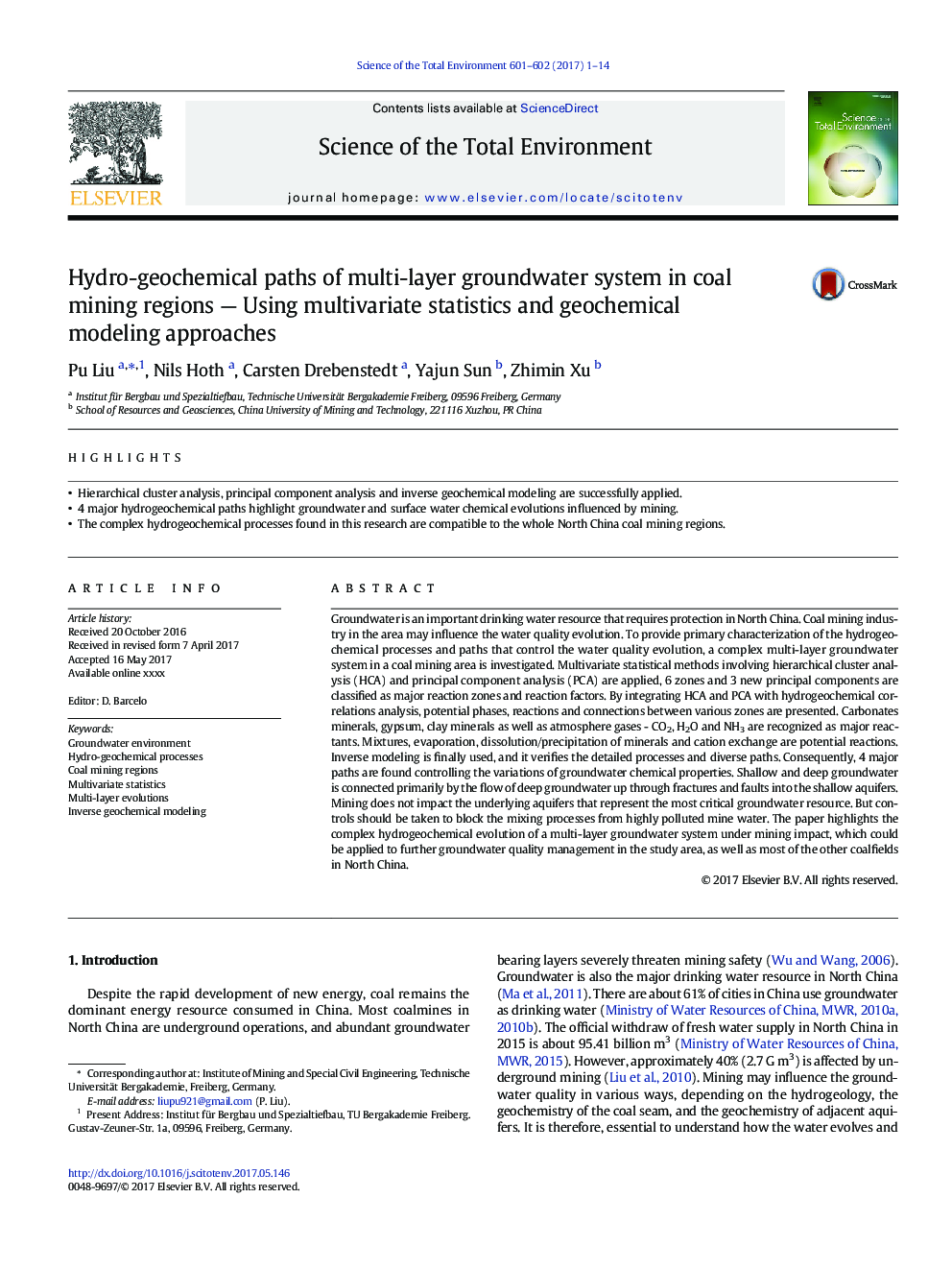| Article ID | Journal | Published Year | Pages | File Type |
|---|---|---|---|---|
| 5750358 | Science of The Total Environment | 2017 | 14 Pages |
Abstract
Groundwater is an important drinking water resource that requires protection in North China. Coal mining industry in the area may influence the water quality evolution. To provide primary characterization of the hydrogeochemical processes and paths that control the water quality evolution, a complex multi-layer groundwater system in a coal mining area is investigated. Multivariate statistical methods involving hierarchical cluster analysis (HCA) and principal component analysis (PCA) are applied, 6 zones and 3 new principal components are classified as major reaction zones and reaction factors. By integrating HCA and PCA with hydrogeochemical correlations analysis, potential phases, reactions and connections between various zones are presented. Carbonates minerals, gypsum, clay minerals as well as atmosphere gases - CO2, H2O and NH3 are recognized as major reactants. Mixtures, evaporation, dissolution/precipitation of minerals and cation exchange are potential reactions. Inverse modeling is finally used, and it verifies the detailed processes and diverse paths. Consequently, 4 major paths are found controlling the variations of groundwater chemical properties. Shallow and deep groundwater is connected primarily by the flow of deep groundwater up through fractures and faults into the shallow aquifers. Mining does not impact the underlying aquifers that represent the most critical groundwater resource. But controls should be taken to block the mixing processes from highly polluted mine water. The paper highlights the complex hydrogeochemical evolution of a multi-layer groundwater system under mining impact, which could be applied to further groundwater quality management in the study area, as well as most of the other coalfields in North China.
Keywords
Related Topics
Life Sciences
Environmental Science
Environmental Chemistry
Authors
Pu Liu, Nils Hoth, Carsten Drebenstedt, Yajun Sun, Zhimin Xu,
